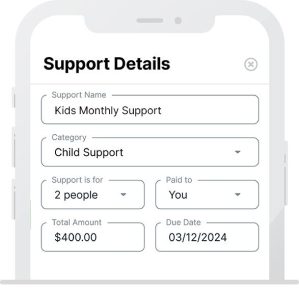
Crafting the Perfect 50/50 Child Custody Schedule: A Guide for Parents
In the maze of divorce or separation, navigating child custody arrangements can feel overwhelming. Yet, creating a fair, flexible, and child-focused custody schedule is pivotal for the well-being of both the children and parents involved. This guide is designed to walk you through the essentials of constructing a custody schedule that best serves your child, while also addressing common concerns and examples to consider. Whether you’re a parent facing this challenge for the first time or looking to refine an existing arrangement, this article promises insights and practical advice to make the process smoother and more equitable for everyone involved.
Outline
- Introduction to Child Custody Schedules
- Understanding the basics
- Why a well-thought-out schedule matters
- What Makes the Best Custody Schedule?
- Prioritizing the child’s needs
- Factors to consider
- Common Custody Schedule Templates
- Overview of 2-2-3, 2-2-5, and alternate weekends
- Examples for different age groups
- Tailoring Schedules for School and Holidays
- Balancing school time, holidays, and vacations
- Splitting major holidays and long weekends
- Adjusting for Work Schedules and Distance
- Co-parenting when parents work different shifts or live far apart
- Creative solutions for unique challenges
- The Importance of Flexibility in Custody Arrangements
- Sharing time during unforeseen events
- Adjusting plans as children grow
- Legal Considerations and Co-Parenting Agreements
- Understanding joint vs. sole custody implications
- Drafting a legally sound parenting plan
- The Role of Communication in Successful Co-Parenting
- Strategies for effective communication
- Tools and apps to support scheduling
- Dealing with Special Circumstances
- Managing custody with newborns, toddlers, and teenagers
- Addressing the needs of children with special considerations
- Examples of Child Custody Schedules
- Going in depth about the different child custody schedules
- Learning how to tackle these and choosing the right one
Learn About The Different Child Custody Schedules (Alternate, Weekend, Joint etc)
1. Introduction to Child Custody Schedules
The formulation of child custody schedules is a pivotal aspect of parenting post-divorce or separation. These schedules outline how each parent will spend time with their child, ensuring that the child maintains a strong and loving relationship with both parents. A well-thought-out schedule can significantly reduce conflicts, misunderstandings, and the overall stress associated with co-parenting. The goal is to create a stable, predictable environment that supports the child’s emotional and developmental needs.
2. What Makes the Best Custody Schedule?
The “best” custody schedule is highly individualized, focusing on the child’s needs first and foremost. It takes into account various factors including the child’s age, the parents’ work schedules, the child’s school and extracurricular activities, and the geographical distance between the parents’ homes. The aim is to minimize disruptions to the child’s daily routine and to ensure the child has quality time with both parents. Flexibility, open communication, and a commitment to the child’s well-being are essential components of an effective custody arrangement.
3. Custody Schedule Templates
Several custody schedule templates are widely used due to their effectiveness in balancing time between parents. The 2-2-3 schedule, for example, allows the child to spend two days with one parent, two days with the other, and then three days back with the first parent. This rotation continues, ensuring frequent contact with both parents. The 2-2-5 arrangement follows a similar pattern but extends the time to five days with each parent after the initial four-day exchange. For older children or in cases where stability is prioritized, alternating weekends can be a simpler option, with weekdays spent at one parent’s home and weekends divided or alternated between the two. These templates can be adjusted based on holidays, school breaks, and other special circumstances.
4. Tailoring Schedules for School and Holidays
Balancing the academic calendar and holiday schedule within a custody arrangement requires careful planning and consideration. It’s important to evenly distribute holidays and special occasions between parents, ensuring the child gets to celebrate and create memories with both sides of the family. This can mean alternating major holidays each year or splitting school breaks. Flexibility is key during these times to accommodate family traditions and the child’s desires.
5. Adjusting for Work Schedules and Distance
When parents have non-traditional work hours or live a significant distance apart, standard custody schedules may not suffice. In these cases, parents might consider longer blocks of time during school breaks for the distant parent or adjusting exchange times to fit work schedules. Creative solutions, such as utilizing technology for daily check-ins or dedicating longer periods during summer and holidays, can help maintain the parent-child bond.
6. The Importance of Flexibility in Custody Arrangements
Life is full of unexpected events and changes. As children grow, their needs, interests, and schedules evolve. A custody arrangement that once worked perfectly may need adjustments. Parents should remain open to revising their custody schedule to better suit their child’s developing needs. This may include considering the child’s extracurricular activities, social life, and academic demands as they age.
7. Legal Considerations and Co-Parenting Agreements
A custody arrangement isn’t just a personal agreement between parents; it often requires legal validation to ensure its enforceability. Understanding the distinctions between joint and sole custody is crucial, as these terms define each parent’s legal rights and responsibilities towards their child. A well-drafted co-parenting agreement should clearly outline the custody schedule, decision-making authority, and financial obligations, providing a solid framework that minimizes the potential for disputes.
8. The Role of Communication in Successful Co-Parenting
Effective co-parenting hinges on clear, consistent communication. Technology offers a plethora of tools and apps designed to facilitate scheduling, updates, and decision-making processes, helping parents stay aligned with their child’s needs and activities. Open dialogue about the child’s well-being, schedules, and changes in circumstances can prevent misunderstandings and ensure both parents are fully engaged in their child’s life.
9. Dealing with Special Circumstances
Every child is unique, and certain situations require special consideration in custody arrangements. Infants and toddlers, for instance, may benefit from shorter but more frequent visits to maintain strong bonds with both parents. Teenagers, with their busy schedules and social lives, might prefer a more flexible approach that allows them to maintain their commitments and relationships outside the family. For children with special needs, custody schedules may need to accommodate medical appointments, therapies, and routines that support their well-being.
10. Examples of 50/50 Child Custody Schedules
Child custody schedules vary widely to accommodate the unique needs of each family, the specific needs of the child, and the logistical and work commitments of each parent. Below, we explore a few examples of common child custody schedules that demonstrate flexibility, balance, and a focus on the child’s well-being.
Alternating Weeks Schedule
One of the simplest custody arrangements is the alternating weeks schedule, where the child spends one week with one parent and the next week with the other parent. This schedule works well for older children and teenagers who can handle longer periods away from each parent and benefits from the simplicity and consistency it offers. It’s particularly effective in minimizing exchanges and providing a stable routine for school and extracurricular activities. However, parents should ensure they maintain regular communication with the child during the off-week to sustain a strong emotional connection.
2-2-3 Schedule
The 2-2-3 schedule allows children to spend two days with one parent, two days with the other parent, and then alternate the weekends, resulting in a three-day stay. This rotation continues week by week. This schedule is often favored for younger children who may need more frequent contact with each parent to maintain strong bonds. It ensures that the child never goes more than a few days without seeing either parent, but it requires parents to manage more frequent exchanges.
2-2-5-5 Schedule
Similar to the 2-2-3 schedule but designed for a bit more stability, the 2-2-5-5 schedule has the child spending two days with one parent, two days with the other, and then alternating five days with each parent. This pattern allows children to have a consistent schedule for school weeks and weekends, making it easier for parents to plan activities and manage work schedules. It also offers a good balance of frequent contact with both parents while allowing longer stretches for bonding time.
3-4-4-3 Schedule
The 3-4-4-3 schedule splits the week so that the child spends three days with one parent, then four days with the other, followed by four days with the first parent and three days with the second, on a rotating basis. This schedule is beneficial for providing equal time with both parents while accommodating a consistent routine for the child. It’s particularly useful for parents who want a balance between the alternating week schedule and the more frequent exchanges of a 2-2-3 schedule.
Every Other Weekend Plus One Weeknight Visit
For parents who have significant work commitments or live a considerable distance apart, having the child every other weekend with one weeknight visit can be a practical solution. This arrangement often sees the child primarily living with one parent during the school year, with the other parent having the child for weekends and an additional night for dinner or an overnight stay. This schedule allows the non-custodial parent to maintain a regular, albeit less frequent, presence in the child’s life.
Summer and Holiday Special Schedules
Beyond the regular weekly or monthly routines, special schedules for summer vacations and holidays are crucial. These might involve longer stays with each parent during school breaks, alternating major holidays each year, or splitting the summer so each parent has an extended period with the child. These schedules are tailored to allow both parents to enjoy significant and meaningful time with the child during special occasions and vacations.
Special Considerations for Infants and Toddlers
For very young children, custody schedules might require more frequent exchanges to support the development of parental bonds. Shorter but more frequent visits, such as several hours each day or every other day, can be arranged to accommodate the needs of infants and toddlers. As the child grows older, the schedule can gradually shift to include overnights and longer periods with each parent.
Each of these examples underscores the importance of designing a custody schedule that prioritizes the child’s physical, emotional, and developmental needs while also considering the parents’ lifestyles and commitments. Flexibility, communication, and a willingness to adjust the schedule as needed are key to creating a custody arrangement that supports the child’s relationship with both parents and fosters a sense of stability and security.
What Is the Best 50/50 Custody Schedule?
The “best” 50/50 custody schedule depends on several factors, including the age of the children, the geographic proximity of the parents’ homes, the parents’ work schedules, and the children’s school and activity schedules. The goal is to find a balance that minimizes disruptions to the children’s routines while maximizing quality time with both parents. Here are some commonly used 50/50 custody schedules that are considered effective, each with its own advantages:
1. Alternating Weeks Schedule
- Description: Children spend one week with one parent and the next week with the other parent.
- Advantages: Provides simplicity and consistency, which can be beneficial for older children and teenagers. It minimizes exchanges and allows children to settle into each home for a longer period.
- Considerations: Younger children might find the week-long separation challenging. Regular communication during off weeks can help maintain a strong bond.
2. 2-2-3 Schedule
- Description: Children spend two days with Parent A, two days with Parent B, and then three days again with Parent A. The schedule then flips in the following week.
- Advantages: Ensures that children never go more than a few days without seeing either parent, which can be especially good for younger children.
- Considerations: Requires more frequent exchanges and can be complex to manage over time.
3. 2-2-5-5 Schedule
- Description: Children spend two days with Parent A, two days with Parent B, followed by five days with Parent A, and then five days with Parent B.
- Advantages: Provides a consistent schedule that children can easily remember and adjust to, while still allowing both parents significant blocks of time with the children.
- Considerations: Works best when parents live relatively close to each other and the children’s school to minimize commute times.
4. 3-4-4-3 Schedule
- Description: Children spend three days with Parent A, then four days with Parent B, followed by four days with Parent A, and three days with Parent B.
- Advantages: Offers a balanced approach with a mix of short and slightly longer stays at each parent’s home, ensuring frequent contact with both parents.
- Considerations: Like the 2-2-3, this schedule involves regular exchanges and may require good logistical coordination between parents.
Choosing the Best Schedule
The “best” schedule is one that works well for all involved, particularly the children. Consider these factors when deciding:
- Children’s Ages: Younger children may need more frequent transitions, while older children may handle longer intervals better.
- Parents’ Work Schedules: Choose a schedule that aligns with both parents’ work commitments and allows them to spend quality time with their children.
- Logistics: Proximity to school and extracurricular activities should be taken into account to minimize travel time and disruption.
- Children’s Preferences: Especially for older children, their input on the schedule can be valuable in making them feel heard and accommodated.
Ultimately, the best 50/50 custody schedule is one that places the children’s needs and well-being at the forefront, supports their relationship with both parents, and is flexible enough to adapt to changing circumstances. Effective communication and a willingness to adjust the schedule as needed are key to successful co-parenting.
Summary: Key Takeaways
- The child’s well-being is the cornerstone of any custody schedule.
- Flexibility and openness to change are vital for addressing the evolving needs of the child and the dynamics of co-parenting.
- Effective communication between parents supports the successful implementation and adjustment of custody arrangements.
- Legal documentation of the custody agreement ensures clarity and enforceability, providing a stable framework for co-parenting.
- Learning from the experiences of others can provide practical solutions and encouragement for navigating the complexities of custody scheduling.
- The ‘best’ 50/50 custody schedule depends on what suits your situation. It is best to ask yourself and analyse the situation properly to move forward with the custody.
Crafting a custody schedule that benefits the child and works for all parties involved requires patience, thoughtfulness, and a commitment to cooperation. By prioritizing the child’s needs, maintaining open lines of communication, and being willing to adapt, parents can create a stable, loving foundation for their child’s growth and development post-divorce.









